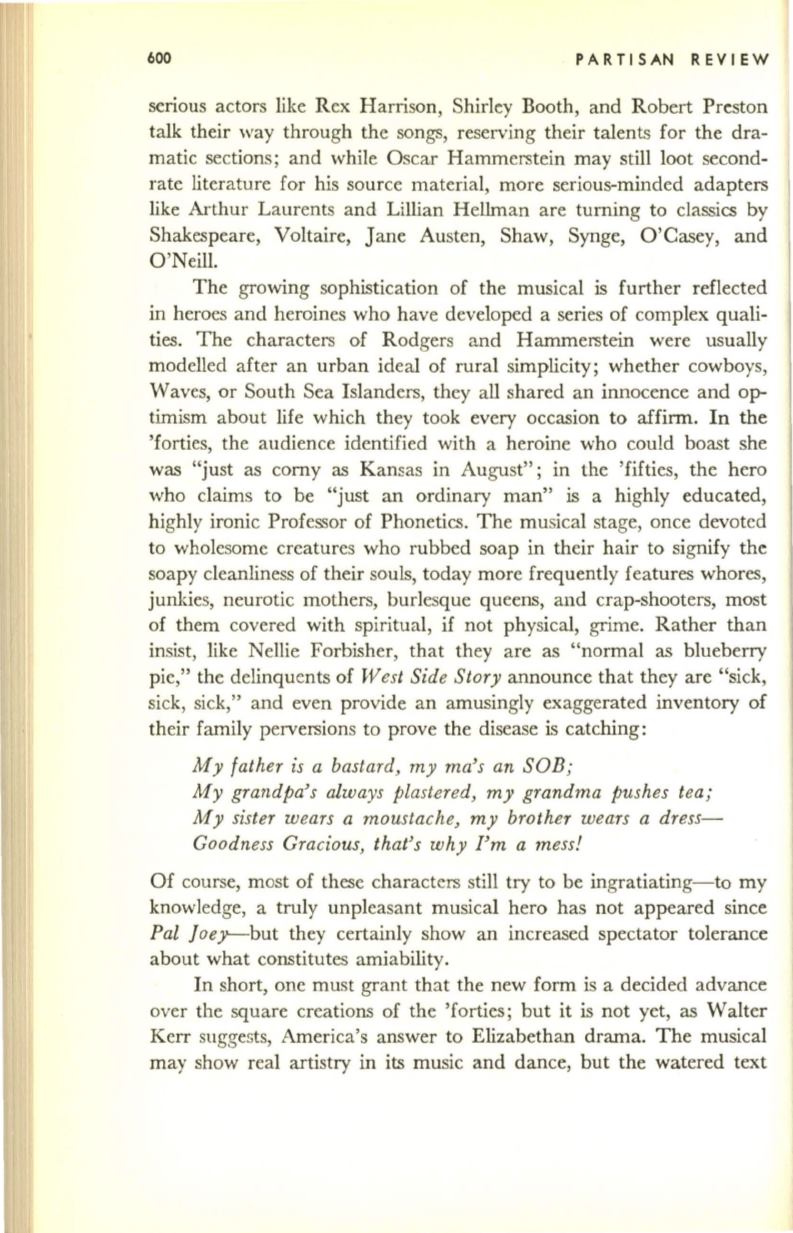
600
PAR
TIS AN REV lEW
serious actors like Rex Harrison, Shirley Booth, and Robert Preston
talk their way through the songs, reserving their talents for the dra–
matic sections; and while Oscar Hammerstein may still loot second–
rate literature for his source material, more serious-minded adapters
like Arthur Laurents and Lillian Hellman are turning to classics by
Shakespeare, Voltaire, Jane Austen, Shaw, Synge, O'Casey, and
O'Neill.
The grmving sophistication of the musical is further reflected
in heroes and heroines who have developed a series of complex quali–
ties. The characters of Rodgers and Hammerstein were usually
modelled after an urban ideal of rural simplicity; whether cowboys,
Waves, or South Sea Islanders, they all shared an innocence and op–
timism about life which they took every occasion to affirm.
In
the
'forties, the audience identified with a heroine who could boast she
was "just as corny as Kansas in August"; in the 'fifties, the hero
who claims to be "just an ordinary man" is a highly educated,
highly ironic Professor of Phonetics. The musical stage, once devoted
to wholesome creatures who rubbed soap in their hair to signify the
soapy cleanliness of their souls, today more frequently features whores,
junkies, neurotic mothers, burlesque queens, and crap-shooters, most
of them covered with spiritual, if not physical, grime. Rather than
insist, like Nellie Forbisher, that they are as "normal as blueberry
pie," the delinquents of
West Side Story
announce that they are "sick,
sick, sick," and even provide an amusingly exaggerated inventory of
their family perversions to prove the disease is catching:
My father is a bastard, my ma's an SOB;
My grandpa's always plastered, my grandma pushes tea;
My sister wears a moustache, my brother wears a dress–
Goodness Gracious, that's why I'm a mess!
Of course, most of these characters still try to be ingratiating-to my
knowledge, a truly unpleasant musical hero has not appeared since
Pal Joey--but
they certainly show an increased spectator tolerance
about what constitutes amiability.
In
short, one must grant that the new form is a decided advance
over the square creations of the 'forties; but it is not yet, as Walter
Kerr suggests, America's answer to Elizabethan drama. The musical
may show real artistry in its music and dance, but the watered text


